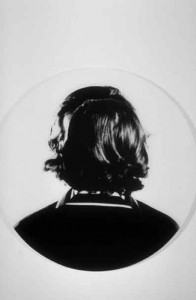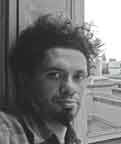« Features
Kettle’s Whistle / Exhibition Exhibition
The importance of alter egos, doubles, counterparts, and polar opposites can hardly be underestimated in contemporary art. The list of works dealing with it is endless. There are the ongoing series of paintings Roman Opalka and On Kawara have dedicated to the passing of time; Andy Warhol’s iconic serigraphy prints; Alighiero & Boetti’s separation of himself into two different artists; more recently, the look-a-like girls wandering around exhibition spaces in the early Vanessa Beecroft’s performances, soon to be replaced with an equally uniform legion of models; Pawel Althamer’s action involving people doing the very same thing every day at the same time for a few minutes at Manifesta 3 in Ljubljana; Monika Sosnowka’s labyrinth of doors and corridors two years later in Frankurt; Francis Alÿs’s sixty-four lost coldstream guards marching in the streets of London in the attempt of reuniting their battalion in 2005; or Candice Breitz’s film investigation on the experience of five groups of identical twins at Power Plant in Toronto in 2009. It’s a subject that clearly exercises a strong form of fascination among artists and that possibly finds its most ancient relative in the self-portrait, that moment of study and accountability for an image that is nothing else but the visual reflection of the author, and that has performed a key role in the art world from the Early Renaissance to nowadays.

Maurizio Cattelan, Moi-Même-Soi-Même (Myself, Oneself), 1997, black and white print, plexiglass, diameter: 31½ in. Collection Gensollen, Marseille. Courtesy Castello di Rivoli Museum of Contemporary Art, Rivoli-Turin.
Having established relevance, long-standing tradition, infinite variables, and developments, it is disappointing to see a theme with such a huge history and potential turning into a depressingly flat affair if moved from an artist’s perspective to a curatorial one. ‘Exhibition Exhibition’, the exhibition that opened at Castello di Rivoli last November, is a vivid demonstration of what happens to a brilliant idea when it’s frustrated by a scarce imaginative rendition. On paper, all the premises for something interesting are all there: the arbitrariness of perception and interpretation, change, variation, visual deception, a valid ensemble of artists, and all within the boundaries of a solid and well-respected institution. And yet the result is nowhere as intriguing as the original intentions of the art displayed. Curator-in-residence Adam Carr’s idea of splitting the space in two and then in four, as to mirror the dual spirit of the show, is seriously flawed by the presence of too many art works, and some unfortunate associations that diminish their individual value. Everything looks like innocuous and decontextualized eye-candy. Maurizio Cattelan’s exhibition at Emmanuel Perrotin in Paris in 1997 for example, which consisted of a perfect replica of a Carsten Höller’s exhibition simultaneously taking place at Air de Paris next door, is here reduced to a Höller’s black and white print and its copy. It destroys the multidimensionality of Cattelan’s intervention, ignoring the critical relationship it established with the monotonous gallery architecture in the then newly launched art neighborhood of Rue Louise Weiss, as well as reinforcing the trite notion that he is little more than a professional prankster. Courtesy of the Museum’s own collection, Arte Povera is over-represented, with works by Boetti, Michelangelo Pistoletto, Giuseppe Penone, and Giulio Paolini. The latter one’s Disegno Geometrico (1960), an early, informalism-influenced composition, has inexplicably been preferred to any of the much more poignant sculptures from the Mimesi series. And if geometrical repetition is part of the game, how about the op-artists that set a landmark in visual perception at the legendary exhibition ‘The Responsive Eye’ at MoMA in the 1960s? Years ago Carsten Höller himself had a solo show at Kunsthalle Bregenz called ‘Carousel’. The second floor featured a room divided in diagonal, half of this completely covered in mirrors. Walking through that space made for a real disconcerting experience, with viewers not altogether sure about which part of the museum they were in and if what they were seeing was the same art seen a few minutes earlier. The only truly repeating element that emerges from ‘Exhibition Exhibition’ is an annoying tendency to treat art works as if they are pieces fitting a jigsaw puzzle.
There are no doubts that Castello di Rivoli’s restrictive architecture plays a big hand in the disaster, but this damning fact shouldn’t be emphatically denounced in the press release as if to enhance the organizers’ talent for overcoming challenging situations. The immense duplicator of images conceived by Carr doesn’t remind one of a kaleidoscope that alters the experience of art at all, but rather of an equalizing instrument expressing fundamental incapability for giving a tangible form to something theoretically so engaging.



































